__________________________________________________________________________
* Text thankfully informed by Bruce Gagnon on April 11, 2010.
Gil Seo-Young thankfully forwarded the translated text on April 26, 2010.
2010년 4월 11일 브루스 개그논에 의해 감사히 자료 제공 받음.
번역된 텍스트는 길서영님에 의해 4월 26일 감사히 전송되었읍니다.
* Translator: Sim Ji-Yeon
번역자: 심지연
__________________________________________________________________________
Japan Focus 재팬 포커스
Japan, Okinawa, Philippines
아시아 미군기지의 환경오염 실태: 일본, 오키나와, 필리핀
Hayashi Kiminori, Oshima Ken’ichi and Yokemoto Masafumi
하야시 기미노리, 오시마 케니치 그리고 요케모토 마사푸미 씀
Translated by Christopher Nelson
크리스토퍼 넬슨에 의해 영문으로 번역됨
I Military Activity and Environmental Problems
I. 미군 활동과 환경문제
전쟁은 환경파괴의 결정적 요인으로 일컬어진다. 전투 중에 발생하는 완전한 환경파괴는 제2차 세계대전, 베트남 전쟁, 걸프 전쟁, 이라크 전쟁 등에서 확인되어왔다. 하지만 평화시에도 군수시설, 기지에서의 매일의 활동 혹은 전시준비를 위한 군사 교육 및 작전 훈련을 통한 군사활동을 통해 환경 파괴는 발생한다. 특별히 미국의 경우, 전세계 국방비 지출의 반 이상을 차지하고 있는 만큼의 거대 군사력을 가진 미국의 환경 파괴는 무섭기까지 하다. 예를 들어 일본의 경우, 오키나와의 후텐니아(Futnenia) 해병대 항공기 이착륙장의 공사에 동반하는 자연손상을 가속화 시킬 것이며, 항공기 소음은 기지 주위에 큰 피해를 일으킬 것이다. 한국의 매향리에서는 전투기 폭격 연습으로 인해 심각한 환경오염이 발생하고 있다. 이 글은 아시아에 주둔하고 있는 미군기지의 환경오염에 초점을 맞추었으며 이는 군사 활동으로 인한 환경문제 실태 파악을 위함이다. 일본의 요코타, 오키나와 필리핀에서의 미군기지로 인한 환경오염에 대한 조사에 이어, 우리는 실례를 통해 얻을 수 있는 주요한 결론을 살펴볼 것이다. 우리의 목적은 이러한 군사 환경문제에 대한 해결방안 모색이다.
 Why did we choose the problem of pollution associated with American bases in Asia? One reason is the particular importance to the US of Asian bases, especially those in Japan. In 2002, 44.3% of all American soldiers stationed overseas and 26.7% of US bases were concentrated in Asia. Since US bases in the Philippines were closed in 1992, most are now in Japan and Korea. The majority of US Marines stationed abroad are also located in Japan. What’s more, Japan provides 62% of the budget for basing American soldiers in Japan. In 2001, it was about 4.6 billion dollars. In addition to the so-called “Sympathy Budget” that Japan offers in order to support US bases, Japan provides additional funds such as indemnities for noise and various kinds of financial support for base activities. From the prospective of the American military, this has made it easy to pay for their overseas presence. Only in Japan (Yokota) has such an extensive complex of foreign military air force and navy bases, including port facilities for an aircraft carrier, been placed in such close proximity to the capital of an independent state. From a global perspective, this is an exceptional situation.
Why did we choose the problem of pollution associated with American bases in Asia? One reason is the particular importance to the US of Asian bases, especially those in Japan. In 2002, 44.3% of all American soldiers stationed overseas and 26.7% of US bases were concentrated in Asia. Since US bases in the Philippines were closed in 1992, most are now in Japan and Korea. The majority of US Marines stationed abroad are also located in Japan. What’s more, Japan provides 62% of the budget for basing American soldiers in Japan. In 2001, it was about 4.6 billion dollars. In addition to the so-called “Sympathy Budget” that Japan offers in order to support US bases, Japan provides additional funds such as indemnities for noise and various kinds of financial support for base activities. From the prospective of the American military, this has made it easy to pay for their overseas presence. Only in Japan (Yokota) has such an extensive complex of foreign military air force and navy bases, including port facilities for an aircraft carrier, been placed in such close proximity to the capital of an independent state. From a global perspective, this is an exceptional situation.왜 우리는 아시아에 주둔하는 미군기지 오염에 초점을 맞추었는가?
첫번째 이유는 아시아주둔 미군기지, 특별히 일본에 있는 미군의 중대성에 있다. 2002년 미군의 약 44.3%가 해외에 주둔하며 26.7%가 아시아에 집중되어 있다. 1992년 필리핀에서의 미군기지 철수 이후부터 대부분의 미군기지는 일본과 한국에 있다. 대다수의 미군해군 역시 일본에 위치하고 있다. 일본은 일본에 주둔하는 미군기지에 대한 62%의 재정을 감당하고 있다. 2001년 그 액수는 약 미화 46억불에 다다랐다. 또한 “동정기금(Sympathy Budget)이라 불리는 재정을 미군기지에 지원하며, 소음공해 보상금과 같은 다양한 종류의 금전적 지원을 제공해 왔다. 이러한 일본의 지원은 미군 해외주둔의 비용 부담을 가볍게 해준다. 오직 일본(요코타)에서만 항만시설을 포함한 광범위한 외국 공군 및 해군 기지단지가 독립자치구의 수도와 근접하게 위치하고 있는데, 이는 세계적으로 봤을 때, 유례가 없는 경우이다.
두번째 이유는 미국의 해외주둔 군사기지 중에서도 아시아 기지의 오염은 대개 심각하다.
1993년 본 추가 협정(Bonn supplemental agreements) 에 따르면 기지오염은 미군이 해결해야 할 첫번째 군사환경문제의 과제이었다. 하지만 필리핀에서의 피해를 목도하였음에도 불구하고, 오염에 대한 주제는 새로운 세기를 거치면서도 다뤄지지 않은 채 지나치게 되었다. 이러한 상황을 어떻게 바로잡을 것인가는 매우 시급히 다루어야 할 주제라 할 수 있다.
II The Problem of Pollution in US Bases in Asia
II. 아시아주둔 미군의 환경오염문제
The Philippines 필리핀
In the Philippines, there has been a long history of foreign military bases including Japanese military occupation during World War II. Apart from this period of Japanese occupation, the US military has used the Philippines as a military stronghold in Southeast Asia since the Spanish American War of 1898.
필리핀은 세계 2차 대전시기 일본의 점령을 포함한 외국군사기지의 긴 역사를 가지고 있다. 일본군의 점령시기를 제외하고 1898년 스페인-미국전쟁 이후 미군은 필리핀을 동남아시아의 전초기지로써 사용해왔다.
The main US bases located in the Philippines were Clark Air Force Base and Subic Naval Base. These bases were returned to the Philippines between 1991 and 1992. However, even before their return, it was recognized that these bases caused environmental pollution through such routine uses as oil spills, the dispersion of pesticide, and the disposal of wastes and ammunition. The US military failed to properly manage and dispose of toxic materials and did not remove this pollution when the bases were closed.
필리핀에 위치한 주요미군기지는 클라크 공군기지(Clark Air Force)와 수빅 해군기지(Subic Naval Base)이다. 이 기지들은 1991에서 1992년 사이에 필리핀에 반환되었다. 하지만 반환 전부터 기름유출, 제초제살포, 폐기물과 탄약 배출 등으로 인한 환경오염이 발견되어 왔다. 미군은 독성물질에 대한 적절한 관리 및 처리 등에 실패하였고, 군사기지 폐쇄 시에도 이러한 오염원을 제거하지 않았다.
The refugees who took shelter at Clark Air Force Base in order to escape the eruption of Mt. Pinatubo in 1991 suffered direct and serious consequences from base pollution. They were not notified that Clark Base was contaminated with toxic material and they used shallow wells in the base to get drinking water. This would later cause very serious health complications. At Subic Bay, it has been reported that there were quite substantial numbers of victims, mainly suffering from asbestosis, among former workers at ship repair facilities. According to “The People’s Taskforce for Base Cleanup,” a local environmental NGO, the total number of victims of pollution from both Clark Air Force Base and Subic Naval Base, as of the end of April 2004, is 2,460. Among those victims, 1060 have died; the health issues of surviving victims include leukemia, cancer, respiratory problems, and skin diseases.
1991년 피나투보산의 화산폭발을 피하기 위해 클라크 공군기지에 피신해 왔던 주민들은 기지 오염으로 인한 직접적인 피해를 입었다. 그들은 클라크 공군기지가 독성물질로 오염되어 있다는 사실을 통지 받지 못했고, 기지주위의 우물을 식수로 사용했다. 이는 이후 다양한 합병증 등 심각한 건강문제를 일으켰다. 수빅만에서는 상당한 수의 희생자가 보고 되었으며,이는 주로 선박 수리시설에 근무하는 노동자들에게 발생한 석면으로 인한 피해였다. 지역환경 NGO 단체인 “군사기지 정화 대책본부”(The People’s Taskforce for Base Cleanup) 에 의하면 클라크 공군기지와 수빅 해군기지에 의한 희생자는 2004년 4월 말기준, 2060명에 다다른다. 그 중 1060명 사망하였으며, 현재 생존한 희생자들은 백혈병, 암, 기관지성 문제, 피부병 등을 호소 하고 있다.
The US military has not done any pollution cleanup nor provided any compensation to these victims. A section of the Status of Forces Agreement (SOFA) signed between the Philippines and the United States in 1947 that relieves US military from responsibility for restoring bases to their original condition has been cited as justification for the failure to take any action. Since so many have suffered from base pollution, it is critical to consider these incidents that took place in the Philippines.
이에 있어 미군은 어떠한 환경오염 정화나 희생자들에 대한 보상을 실시하지 않았다. 1947년 필리핀-미국 SOFA 조약은 미군이 사용기지를 원래의 상태로 복원시키는 것에 대한 책임을 면제해주었고, 이는 미군이 어떠한 조치를 취하지 않는 것에 대한 정당성을 부여 하였다. 많은 희생자가 기지 오염으로 인해 발생하였다는 것만으로도 필리핀에서 발생한 이 사건을 재고하는 것은 매우 중요하다.
Okinawa 오키나와
There have been reports of pollution in Okinawa caused by the US military since the beginning of the American Occupation. In 1947, base pollution in Iheya led to the death of eight people from arsenic poisoning. After the reversion of Okinawa to Japanese sovereignty in 1972, frequent oil spills continued to cause significant damage. In spite of such incidents, almost no countermeasures were taken to prevent base pollution. In part, this was due to the priorities of the times; however, it reflects the priority over all else that has always been accorded to the US military. Even now, the public only learns about base pollution when damage to the local community is caused by an incident that transcends the boundaries of the base. The jet fuel spill at Kadena Air Base that lasted for four days beginning on May 25, 2007 is but the most recent example of this.
미군에 의한 오키나와의 환경오염은 미군 점령 초기부터 보고되어 왔다. 1947년 이헤야(Iheya) 의 미군기지의 오염은 비소중독으로 인한 8명의 사망자를 낳았다. 1972년 오키나와가 일본 통치권으로 돌아간 이후부터, 잦은 기름유출은 상당한 피해를 입혀왔다. 이러한 사건들에도 불구하고, 미군은 기지 오염에 대한 어떠한 대항책을 마련하지 않았다. 일부는 그 당시의 당면한 과제의 우선 순위 탓으로 돌릴 수 있다. 하지만 이는 미군의 전반적 우선순위에 합치된 것이다. 지금까지도 기지 경계를 넘어 주변지역의 피해가 발생할 경우에만 기지오염에 대한 문제를 알게 될 뿐이다. 2007년 5월 25일부터 4일동안 발생한 카데나(Kadena) 공군기지 제트기 연료 유출이 가장 최근의 일례이다.
There are also serious problems with pollution in the former base areas that have been returned by the US military. The one-time US Communications Station at Onna Point demonstrates the severity of these ecological problems. In 1996, toxic materials such as cadmium, mercury, PCBs, lead, and arsenic were detected in the outflow area around Onna Point and in muddy soil inside a former water treatment tank at the base. After discussions between representatives from Okinawa Prefecture and the US military regarding toxic waste disposal, the American government refused to restore any polluted soil. Again, they claimed that the US-Japan SOFA absolved them from any responsibility to return sites to their original condition. To date, the Japanese Self Defense Force continues to store polluted soil temporarily on government land at their facility in Onna and the Government of Japan pays for this storage.
또한 반환된 미군기지 지역에 오염 역시 심각하다. 한때 미군 정보기지였던 온나 기지(Onna Point)는 생태문제의 심각성을 보여준다. 1996년 카듀뮴, PCB, 납, 비소등의 독성물질이 온나 기지주변과 기지의 식수 처리시설 내부의 진흙 토양에서 검출되었다. 독성물질처리에 대한 오키나와 지사와 미군의 협의 이후에도 미정부는 오염 토양에 대한 어떠한 복원도 거부했다. 그들은 다시 미국-일본 SOFA 규정을 들어 기지의 원래 상태로의 복원에 대한 책임을 회피했다. 최근까지 일본자위대가 온나 기지 주위지역 정부부지의 오염된 토양을 복원하고 있으며 일본정부가 그 비용을 감당하고 있다.
Since this case, there have been many similar incidents. On January 30, 2002, barrels containing tar-like material were discovered buried at a construction site in Mihama in the city of Chatan. The Government of Japan paid approximately 84 million yen for its disposal. Also in March 2003, soil in the northern area of former Camp Kuwae was found to be contaminated with lead at levels twenty times higher than environmentally acceptable as well as with arsenic, hexavalent chromium and PCBs. Because of this, plans to develop the returned site have been delayed.
위와 같은 경우를 비롯한 여러 비슷한 사건이 있다. 2002년 1월 30일 타르로 추정되는 물질 수 배럴이 차탄(Chatan)의 한 도시 미하마(Mihama)에 공사 현장에 매립된 채 발견되었다. 일본정부는 약 8400만 엔을 이 건에 투입하였다. 또한 2003년 3월에는 이전 쿠와에(Kuwae) 캠프 북쪽 지방에서 환경기준의 20배가 넘는 납이 검출 되었으며 비소, 크로뮤늄, PCB등 역시 검출되었다. 이로 인해 반환된 지역의 개발계획 또한 지연되고 있다.
As in the cases of the Philippines and Okinawa, pollution inside US military bases was assessed for the first time when they were returned to local control. However, in those situations, it was difficult to grasp the events that led to the pollution. After pollution was discovered, the only way to take effective countermeasures was to provide medical treatment to victims based on their symptoms. It was difficult to detect the hazards and risks associated with pollution beforehand. Yokota Air Base was an exception in that requests made under the US Freedom of Information Act revealed pollution prior to the base’s return.
필리핀과 오키나와의 경우 미군기지내의 오염은 기지가 자국으로 반환되는 시점에서 평가 되었다. 하지만 이런 상황에서는 어떠한 사건이 어떠한 오염을 일으켰는지 파악하기 어렵다. 오염이 발견된 이후에서야 유일한 효과적 대응책으로 피해자들의 증상에 따라 의료적 조치를 제공할 뿐이었다. 오염에 따른 위험과 손해를 미리 감지해내는 것이 어려웠다. 요코타 공군기지는 미국 자유정보령( US Freedom of Information Act)에 의한 요구로써 기지가 반환되기 전 오염이 발표된 특별한 경우였다.
대중지에 의해 다음과 같은 사실이 알려졌다. 첫번째, 1999년 9월 30일부터 2006년 5월 10일까지 약 7년의 기간 동안 90번의 오염물 유출이 발생했다. 이중 9번은 주변지역에 심각한 영향을 끼칠만한 유출이었다. 오염물 유출 전체 56%를 차지하는 제트연료는 90번 중의 50번의 사고로 이어졌다. 공군기지인 요쿄타는 제트연료와 같은 독성물질이 주위 거주지역에서 사용되었고, 미군은 이러한 유출을 완전히 막아내지 못한 것이다.
Second, Yokota is considered to have problems with pollution that include incidents not recognized by the US military. As in the returned bases in the Philippines, toxic materials accumulated during a time when their safe disposal was neglected can cause adverse affects on the local community and environment. It is also possible to prevent the returned site from being further utilized. Since, even with the release of information, it is difficult to comprehensively assess base pollution, the challenge of resolving these issues will continue to exist unless methods to actually investigate the environment inside bases are established.
두번째, 요쿄타에 미군에 의해 채 발견되지 못한 오염의 문제가 있다. 필리핀기지가 반환되었을 때와 같이, 독성물질 안전처리가 무시된 결과로 독성물질의 축적은 주변지역과 환경에 부정적 결과를 일으킬 수 있다. 반환되는 지역이 계속 사용되는 것 자체를 막을 여지도 있다. 왜냐하면 정보 공개에도 불구하고, 기지 오염을 면밀하게 파악하기가 쉽지 않고, 기지 안 환경을 조사하는 제도가 확립하기 전 상태에서의 오염문제 해결이 쉽지 않기 때문이다.
III Why does base pollution occur? An Institutional Analysis
III. 기지오염은 왜 발생하는가? 학회분석
Status of Forces Agreement with the US 미국과의 협약 내용
Rules and regulations governing the activity of US military at bases are provided in the SOFA. In Japan and South Korea, exclusive right to the use of bases by US military is provided under Article 3, Section 1 of the SOFA. The military is exempted from the environmental laws of both their host countries and the United States of America under this agreement. Given this exclusive right of base use it is difficult to perform walk-in investigations of bases for the purpose of environmental study. There is no section requiring the preservation of the environment in the SOFA and the US military continued to remain free from any rules and regulations until the time when regulations by US Department of Defense became meaningful in the 1990’s, as discussed in detail below.
기지에서의 미군 활동에 대한 규정과 법규는 SOFA에 기재되어 있다. 일본과 남한에서의 미군기지 사용에 대한 독점적 권리는 SOFA 3조 1항에서 연유한다. 이 협정에 의하면 미군은 주최국이나 미국의 환경법에서부터 면제된다. 이러한 기지사용에 대한 독점적 권리로 인해 환경감사목적을 위한 외부조사를 실시하기가 어려워 졌다. SOFA에는 환경보전에 대한 요구조항이 없고, 이는 1990년 미국 국방부 규제가 중요해진 시점까지 미군은 어떠한 규정과 법규로부터 자유로웠다.
It is also set forth in Article 4, Section 1 of the SOFA that the US military is exempted from responsibility to restore bases to their original condition. For US bases in Japan, the Japanese government pays any costs rather than requiring contributions by the US military. Therefore, the US military has no incentive to control pollution. Rather, the Japanese government relieves the US military of its financial burden.
SOFA는 4조1항에 의하여 미군은 기지를 원래 상태로 복원하는 책임을 면제받았다. 일본에 있는 기지를 위해 일본 정부는 미군이 요청하는 원조 대신 부대발생 비용을 지불했다. 따라서 미군은 오염을 규제하는 것에 있어 금전적 이득이 없는 것이고, 일본은 오히려 미국의 재정적 부담을 줄여준 셈이다.
Disposal of toxic materials and waste 독성물질과 폐기물 배출
Because of the disclosures of serious environmental destruction in the Philippines discussed earlier, and increasing awareness of environmental issues, the Department of Defense set forth regulations known as the “Department of Defense Policy for Establishing and Implementing Environmental Standards at Overseas Installations” on November 20, 1991. This directive officially outlines DoD policies for the disposal of toxic materials and wastes. It stipulated the creation of two documents: the “Overseas Environmental Baseline Guidance Document” and the “Environmental Governing Standard,” which originated in the former document. The Overseas Environmental Baseline Guidance Document stipulates the minimum standard for environmental protection in overseas bases. On the other hand, the Environmental Governing Standard sets official standards for each base, according to applicable environmental laws of the United States and of the host country as well as SOFAs and other international treaties. The Overseas Environmental Baseline Guidance Document provides a minimum standard; however, if a higher standard is set forth by host country, a comparable standard for environmental management will be established. In Japan, the Environmental Governing Standard was created on May 1, 1995 and has been revised six times to September 2006.
앞에서 언급된 필리핀에서의 심각한 환경 파괴에 대한 보고와 환경문제 자체에 대한 인식이 고양됨에 따라 미국 국방부는 1991년 11월 20일 “해외군사시설의 환경기준 재정 및 실행 에 대한 국방부 방침”(Department of Defense Policy for Establishing and Implementing Environmental Standards at Overseas Installations) 이라고 알려진 법규를 재정했다. 이 법규는 독성물질 및 폐기물 처리에 대한 DoD 제도의 공식적 골자를 마련했다. 이것은 두 가지 문건: “해외시설 환경 기초 지침 문건”(Overseas Environmental Baseline Guidance Document”와 “환경 관리 기준”( Environmental Governing Standard)을 법제화 했다. 해외시설 환경 기초 지침 문건은 해외기지의 환경보전을 위한 최소한의 방침을 마련했다. 환경 관리 기준은 SOFA 및 국제 협약뿐 아니라 주최국과 미국 환경법에 따른 각 기지의 공식 기준을 정립하였다. 해외시설 환경 기초 지침 문건은 최소한의 방침을 제공한다. 하지만 주최국에서 더 높은 기준을 제시할 경우, 적절한 선에서 양립할 수 있는 환경 관리 기준을 정립한다. 일본에서는 환경관리 기준이 1995년 5월 1일 재정시부터 2006년 9월 까지 여섯 차례나 개정되었다.
However, these documents still present problems. First of all, the Environmental Governing Standard is merely a guideline. It imposes no obligation on the US military. Military policy regarding the observance of environmental regulations is always an internal directive and never imposes any responsibility toward the host country, even in the case of violation of this policy.
그러나 이러한 문건은 여전히 여러 문제를 가지고 있다. 무엇보다도 환경 관리 기준은 말 그대로 지침일 뿐이다. 이는 미군에게 어떠한 의무 강제성을 부과하지 않는다. 환경제도에 대한 군사방침은 항상 내부적 지시이며 주최국을 향해 어떠한 의무를 지우지 않는다. 설령 규제위반 상황인 경우에도 상황은 별반 다르지 않다.
Secondly, according to the Japan-US SOFA, the US military is not required to obtain permission from the Government of Japan to perform its activities. The host country is also precluded from taking any initiative to conduct walk-in investigations, which prevents the host country from any direct research into environmental conditions inside the bases. Therefore, it is necessary to revise the SOFA so that the host country will be able to understand and regulate activities conducted by US military.
두번째로 미국-일본 SOFA에 의하면 미군의 군사활동 실행에 있어 미군은 일본정부의 어떠한 허가를 필요로 하지 않는다. 또한 주최국이 외부 조사활동을 주도하는 것이 불가능하며 이는 기지내의 환경상태에 대한 직접적 조사를 막는다. 따라서 주최국이 미군의 활동을 파악하고 규제하기 위한 SOFA 개정의 필요가 시급히 요구되는 바이다.
Removal of Pollution 오염제거
The Environmental Governing Standard mentioned above does not require the removal of pollution. Any removal is considered “to be determined according to applicable international treaties, Status of Forces Agreement and policies of US government”. This is why it is critical to consider the US military’s exemption from any responsibility to restore bases to their original condition in the SOFA.
위에 언급한 환경 관리 기준은 오염제거에 대한 요구를 하지 않는다. 어떠한 오염제거도 적절한 국제협약, 협약 사정 및 미국정부 방침에 따라 결정될 수 있을 뿐이다. 이것이 SOFA에 의한 원래 상태로의 복원에 대한 책임으로부터 미군이 면제되어 있는 바를 생각하는 것에 있어 중요한 점이다.
On February 2, 1998, the Environmental Remediation for DoD Activities Overseas was issued. It stipulates measures for the comprehensive removal of pollution on both bases that are currently in use or have been closed. It broadly outlines expedited environmental governing standards that the American military is to follow when dealing with “known immanent and substantial endangerment to human health and safety.”
1998년 2월 2일 해외 DoD 활동에 대한 환경 개선이 발표되었다. 이는 현재 사용 혹은 폐쇄한 기지에서의 철저한 오염제거에 대한 조치를 명시하였다. “인간건강과 안전에 있어 시급하고 심각하다고 알려진 위험”(“Known immanent and substantial endangerment to human health and safety”)을 다루는 데 있어 미군이 따라야 할 환경 관리 기준의 큰 틀을 제공하였다.
There are two important points in these regulations. The first is that the American military is probably authorized to hide the presence of pollution in overseas military bases by not declaring its presence. It seems likely that, if pollution was made generally known, the American military would have to implement the Environmental Governing Standard at vast expense.
이러한 제도에 있어 중요하게 지적해야 할 두 가지 지점이 있다. 첫째는 미국은 해외기지에서의 오염 실태에 대해 부정함으로써 해외주둔기지에서의 오염 실태를 숨기는 권한을 부여 받을 가능성이 있다. 만약 오염이 일반적으로 알려져 있는 상황이라면 미국은 환경 관리 기준을 실행하는 데 있어 거대한 비용을 치러야 할 것이다.
The second is this: if the presence of pollution is clearly declared, the possibility exists that it would not actually be removed. That is, if it is determined that there is a “known immanent and substantial endangerment to human health and safety” of those outside the base, the pollution will be removed; otherwise, it might not be. The problem is that the specific content of these standards is not defined in the regulations.
두번째는 오염실태가 확실히 파악되었어도 그 오염물이 제거되지 않을 확률이 있다. 기지 밖에서 “인간건강과 안전에 있어 시급하고 심각하다고 알려진 위험”으로 결정되어 있을 경우에만 오염은 제거될 것이고, 그렇지 않으면 제거는 아마도 이루어지지 않을 것이다. 문제는 위 제도에 있어 언급된 기준에 대한 자세한 내용이 정의조차 내려져 있지 않다는 것이다.
In American law, a single standard exists for regulating the removal of pollution in domestic US bases. On the other hand, no laws exist for regulating the removal of pollution overseas. The relations of power between the United States and the host nation come into play. Concerning American overseas bases, beyond Presidential orders, Congressional laws, the internal directives of the Department of Defense, and international agreements like the SOFA, relations of power between the United States and the host nation are mobilized over the issue of pollution. The removal of pollution from overseas bases is not an obligation built on regulations; rather, it takes on the character of a voluntary goal that the American military imposes on itself. When the American military agrees to meet the demands of the host nation to remove pollution, any negligence in removal could damage relations with the host nation and create problems for the smooth use of US bases. That is, pollution is removed in order to avoid damaging the mutual security policies that depend on the effective operation of the bases.
미국법에 따르면 자국 내 기지에 있어 오염제거를 규제하는 단지 하나의 기준이 있고 그나마도, 해외 주둔 기지에 있어 오염제거에 대한 법은 아예 존재하지도 않는다. 다만 미국과 주최국의 힘겨루기가 이를 대체할 뿐이다. 미군 해외기지에 있어 대통령 명령, 국회법, 국방부의 내부 지시, SOFA 와 같은 국제 협약을 넘어 미국과 주최국 간의 힘겨루기로 오염문제를 해결하는 기준이 만들어 지는 것이다. 해외 기지에서의 오염제거는 법적 의무 사항이 아니다. 다만 자발적 성격으로써 미군 스스로가 규정지을 뿐이다. 미군이 주최국의 요구대로 오염을 제거한다고 동의 했을 때, 오염제거 시 미군의 태만이 이는 주최국과의 관계의 손상을 줄 수 있고, 미군기지의 유연적 사용에 있어 문제를 일으킬 수 있다. 따라서 양측 상호 보안 정책에 손해를 입히는 것을 피하고자 오염은 제거 되고, 이것이 기지의 효과적인 사용여부가능성에 영향을 준다.
IV Towards the resolution of problems of environmental pollution associated with overseas American bases
IV. 해외 주둔 미군기지와 관련된 환경오염에 대한 해결 방안
In light of the previous discussion, we can, at minimum, propose the following three points to advance the resolution of environmental pollution associated with American military bases.
앞선 논의에 거쳐 우리는 적어도 미군기지의 환경문제해결에 대한 3가지 방안을 다음과 같이 제시할 수 있다.
The first is that it is necessary to establish the exact nature of this pollution. Concerning pollution within the bases, at present, the host country can only request that information from the US military. Unless the US military makes it public, as in the case of Yokota, information about pollution can only be obtained through the Freedom of Information Act. Within the bases, according to the SOFA, one cannot freely carry out studies that require entering the bases. Considered from the perspective of the safety of the citizens of that area, this is a tremendous problem. It is necessary to revise the SOFA to ensure that the host nation has the right to enter bases in order to carry out this research.
첫번째는 오염에 대한 정확한 정의를 정립하는 것이 필요하다. 현재 주최국은 기지 내에서의 오염실태에 관한 정보를 미군에게만 요청 할 수 있다. 요코타의 예외적인 경우처럼 미군이 오염문제를 공식화하지 않는 이상 오염에 대한 정보는 미국 정보 자유령에 의거해서만 얻을 수 있다. SOFA 에 의하면 기지내로 들어가 실행하는 자유로운 어떠한 조사도 할 수 없다. 그 지역 주민 안전의 측면에서 본다면 이것은 엄청난 문제인 것이다. 주최국이 기지 내에서의 연구를 실행할 수 있는 권리를 보장받을 수 있도록 SOFA를 반드시 개정해야만 한다.
The second is that the American military should be obligated to observe the environmental laws of host countries. In recent years, we have seen that the US military has adopted standards for environmental management and incorporated them in everyday military practices. While it might appear that these standards have become stricter, no powers of enforcement are stipulated. What’s more, military standards of evaluation are unclear as to whether they are required to remove existing pollution or not. It will probably be necessary to enact reforms that include revisions of regional accords in order to address these problems.
두번째는 미군이 주최국의 환경법을 준수하는 것이 의무화 되어야 한다. 최근 몇 년동안 미군은 환경 관리 기준을 적용시키고 매일의 군사훈련에 포함시켜왔다. 그러나 이러한 기준이 더 엄격하게 되었음에도 불구하고, 시행시킬 힘의 발판을 마련하지 못했다. 게다가 평가기준은 매우 불분명하여 현재 존재하는 오염을 제거하라는 요구 여부 내용은 역시 모호하다. 이러한 문제를 공론화 시키기 위해, 지역적 협약을 개정을 포함한 법률 개혁 단행이 필요하다.
The third is that it is necessary to problematize the relationship of American military affairs to the public sphere. As any number of base pollution incidents has clearly demonstrated, even in peacetime, military activity creates severe environmental problems, jeopardizing the safety of those living near the bases. In the name of “National Peace and Security,” vast amounts of money such as the “Sympathy Budget” and various supplementary expenses have been paid to the American military. However, when considered from the perspective of environmental preservation, the activities of the American military have not respected the public sphere.
세번째는 미군활동과 환경문제의 관련성을 대중 차원으로 문제화 시킬 필요성이 있다. 여러기지 오염 사고 건이 밝혀짐에 따라 평화시에도 미군 활동은 심각한 환경 문제를 일으키고 기지 주변지역의 안전을 위협하는 것이 드러났다. “국가 평화 와 안전”(National Peace and Security”) 란 이름 아래 “동정기금” 등과 같은 수많은 재정과 다양한 추가 비용이 미군에게 지급되었다. 문제는 환경보전차원을 고려했을 때, 미군의 활동은 대중과의 소통을 유념해 두지 않았다는 것이다.
Drawing on the resolution of those who live in the areas where military bases are located and, more broadly, on that of citizens nationwide, it is necessary to develop a movement that demands environmental safety. While recognizing the priority that the American military places on the smooth operation of its oversea bases, it is critical that we press forward with demands for the disposal of hazardous materials and the removal of pollution. Fundamentally, environmental safety and military affairs are incompatible. So, from the perspective of environmental safety, we must radically reduce military activity. That is to say, unless we commit ourselves to a movement with citizens as its driving force, striving for environmental disarmament, there will be no resolution to the environmental problems created by the military.
군사기지 주변지역 주민들, 더 나아가 해당 국가의 시민으로부터 해결책을 끌어내어 환경안전운동을 개진시키기 위해 대중과의 소통은 반드시 필요하다. 미군이 해외 기지의 유연한 사용에 우선 순위를 두고 있다는 것을 알고 있더라도 위험물 처리 및 오염제거에 대한 지속적 요구가 결정적으로 중요하다. 근본적으로 환경안전과 군사활동은 양립자체가 불가능 하다. 따라서 환경 안전 차원에서 군사활동은 과감하게 줄여야 한다. 시민과 함께하는 운동으로써 군비축소에 대한 노력에 전념하지 않는다면 군사사설 환경문제에 대한 해결책은 없을 것이다.
Hayashi Kiminori: Adjunct Professor, Department of Political Science, Otsuma Women’s University; Ōshima Ken’ichi: Professor, Department of International Economics, Ritsumeikan University; Yokemoto Masafumi, Professor, Department of Economics, Tokyo Keizai University.
This article was published in Gunshuku Mondai Shiryo (Problems of Disarmament), October 2008, pp. 2-10. Notes in the original are not translated here.
Christopher Nelson is associate professor and director of graduate studies in Anthropology at the University of North Carolina, Chapel Hill and an Asia-Pacific Journal associate. . He is the author of Dancing with the Dead: Memory, Performance, and Everyday Life in Postwar Okinawa.
Recommended citation: Hayashi Kiminori, Ōshima Ken’ichi and Yokemoto Masafum, "Overcoming American Military Base Pollution in Asia," The Asia-Pacific Journal, Vol. 28-2-09, July 13, 2009.
See the following articles on related subjects:
Miyume Tanji, Community, Resistance and Sustainability in an Okinawan Village: Yomitan (link)
Hideki Yoshikawa, Dugong Swimming in Uncharted Waters: US Judicial Intervention to Protect Okinawa's "Natural Monument” and Halt Base Construction (link)
Urashima Etsuko, Opting for the "Irrational": Tokyo Brushes Aside Okinawan Court Order to End Awase Wetlands Reclamation Project (link)
Sakurai Kunitoshi, Okinawan Bases, the United States and Environmental Destruction (link)
C. Douglas Lummis, The US-Japan Status of Forces Agreement and Okinawan Anger (link)
Koji Taira, Okinawan Environmentalists Put Robert Gates and DOD on Trial. The Dugong and the Fate of the Henoko Air Station (link)
Miyagi Yasuhiro, Okinawa and the Paradox of Public Opinion: Base Politics and Protest in Nago City, 1997-2007 (link)


![[URGENT PLEA: In Update] EMERGENCY in GANGJEONG Since AUG. 24, 2011](http://2.bp.blogspot.com/-3iz8k-USXVY/TlmRYhhIYtI/AAAAAAAAL2c/9dbF85ZIkIs/s227/jejusit.jpg)
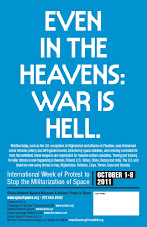
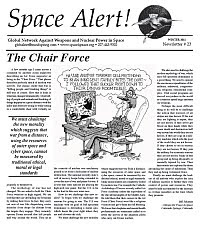

![[Solidarity from Japan for the Jeju] 253 individuals and 16 groups/organizations](http://2.bp.blogspot.com/_gnM5QlRx-4c/TR_YeNVE1yI/AAAAAAAAHWQ/ARyf6oQN0S0/S227/jeju_12_10j.jpg)
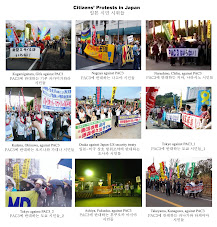
![[Translation] Korean organizations' statement: Immediately cancel the joint ROK-US drill Nov 26](http://2.bp.blogspot.com/_gnM5QlRx-4c/TPOE8VKXHFI/AAAAAAAAGlM/8lryt-8sFjc/S227/1.jpg)
![HOT! [Hankyoreh Hani TV] Beneath the Surface: the investigation into the sinking of the Cheonan](http://4.bp.blogspot.com/_gnM5QlRx-4c/TOI83qht8aI/AAAAAAAAGXU/22SW6Q5ntV8/S227/HaniTV%2BCheonan.gif)
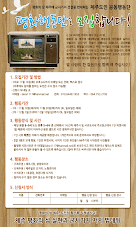
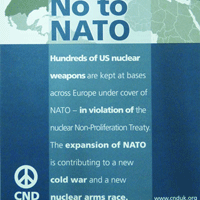

![[Translation]Statement against illegal inspection and unjust lay-off by the Kunsan USAFK!(Nov_2010)](http://4.bp.blogspot.com/_gnM5QlRx-4c/TOPLsVkZMqI/AAAAAAAAGZs/3YnnckIyAaY/S227/gunsan%2Bprotest.gif)
![[Translation] Korean organizations' statement against dispatching special force to the UAE on Nov.](http://4.bp.blogspot.com/_gnM5QlRx-4c/TOP95zHXlCI/AAAAAAAAGak/E0Ug1XtUFfM/S227/antiwarpeace.jpg)
![[Translation] Stop, Joining MD!: South Korean activists' statement and writing on Oct. 25, 2010](http://3.bp.blogspot.com/_gnM5QlRx-4c/TOP7Es4_2sI/AAAAAAAAGac/eWVMPD-U4p0/S227/StopMD.jpg)
![[In Update] People First, NO G-20 (Nov. 6 to 12, Korea)](http://2.bp.blogspot.com/_gnM5QlRx-4c/TJd53XBzHlI/AAAAAAAAFQo/ldO9JPE3eqo/S227/left21_G20.jpg)
![[International Petition] Stop US helipad plan in Okinawa to save great nature](http://4.bp.blogspot.com/_gnM5QlRx-4c/TKC2AHRNzBI/AAAAAAAAFUo/yGWXODTw_uM/S227/yanbaru_w.jpg)

![[Global Network] against the first launch of Quasi-Zenith Satellite, Japan, on Sept. 11, 2010](http://4.bp.blogspot.com/_gnM5QlRx-4c/TIowa1boy4I/AAAAAAAAFDI/82rAi98uq-c/S227/Qzss-45-0_09.jpg)

![[In update] Some collections on the Koreans’ protests against the sanction & war on Iran](http://4.bp.blogspot.com/_gnM5QlRx-4c/TJMvke6t8zI/AAAAAAAAFO4/tamQ8LUnOOA/S227/No+Sanction+on+Iran.jpg)
![[Three International Petitions] to End the Korean war and peace treaty(or peace resolution)](http://1.bp.blogspot.com/_gnM5QlRx-4c/THef7bzWxYI/AAAAAAAAE44/wwdzSDfYhdw/S227/border.jpg)
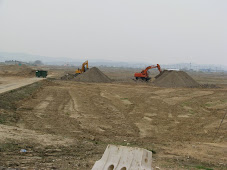


![[Collection of Documents] No Base Learning and Solidarity Program_Korea(June 14 to 20, 2010)](http://1.bp.blogspot.com/_gnM5QlRx-4c/TCTvVuN8NeI/AAAAAAAAEek/8vBJVaHdk10/S227/No-Base-banner.jpg)
![Site Fwd:[John Hines] A U.S. Debate coach’s research trip on the Issues of Korea](http://3.bp.blogspot.com/_gnM5QlRx-4c/TINCO36mzzI/AAAAAAAAE_w/Rds12NcBOXM/S227/Jeju-Peace-Tour.jpg)


![[News Update] Struggle Against the Jeju Naval Base since Jan. 18, 2010](http://1.bp.blogspot.com/_gnM5QlRx-4c/S1vvWaP25uI/AAAAAAAACkg/QvpW1tgOlKM/S226/scrum1.jpg)


![[Urgent] Please spread the Letter!: There was no Explosion! There was no Torpedo! (May 26, 2010)](http://4.bp.blogspot.com/_gnM5QlRx-4c/S_9JmsKEU7I/AAAAAAAAEP8/sAWjSPqxzUI/S227/grounded.jpg)
![Text Fwd: [Stephen Gowans]The sinking of the Cheonan: Another Gulf of Tonkin incident](http://1.bp.blogspot.com/_gnM5QlRx-4c/TAL_FtYKQ-I/AAAAAAAAERE/NEEMijiEcRM/S227/lee-myung-bak.jpg)
![[Japan Focus]Politics in Command: The "International" Investigation into the Sinking of the Cheonan](http://1.bp.blogspot.com/_gnM5QlRx-4c/TBMJ2syJzyI/AAAAAAAAEZU/uTYZccU5vyk/S227/wen_jiabao_and_lee_myungbak.png)
![[Japan Focus] Who Sank the SK Warship Cheonan? A New Stage in the US-Korean War and US-China](http://2.bp.blogspot.com/_gnM5QlRx-4c/S_iQ2vE5ZpI/AAAAAAAAEOU/Oo1SPcAe8FE/S227/buoy_map.gif)
![[Updated on 12/13/10] [Translation Project] Overseas Proofs on the Damages by the Military Bases](http://4.bp.blogspot.com/_gnM5QlRx-4c/S-qSj59gPLI/AAAAAAAAEGM/mwjlFtPE-jo/S227/missile.jpg)
![[International Petition] Close the Bases in Okinawa](http://3.bp.blogspot.com/_gnM5QlRx-4c/S8-z3DYNwNI/AAAAAAAADo4/OswTSchK09M/S227/2.jpg)

![[In Update]Blog Collection: No Korean Troops in Afghanistan](http://4.bp.blogspot.com/_gnM5QlRx-4c/SwnlLD9IewI/AAAAAAAAB9E/oUPssnpNidA/S226/No-Troops-to--Afghanistan.jpg)
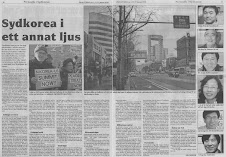

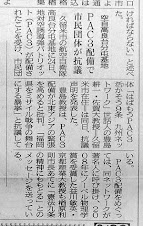

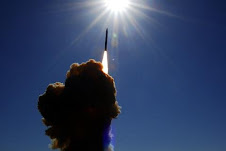






No comments:
Post a Comment